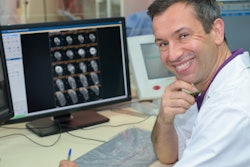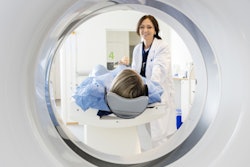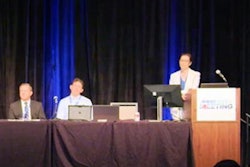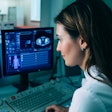
Remote reading for radiologists may be here to stay, even as the world moves past the COVID-19 pandemic, according to research published June 28 in the Journal of the American College of Radiology.
A team led by Easton Neitzel from the University of Arizona in Phoenix found that while most radiology departments in their study accepted remote reading, there was a sharp increase in uptake for academic departments that were less likely to perform remote reading prior to the pandemic.
"Remote reading likely has become a permanent part of radiology workflow," the team wrote.
The pandemic disrupted standard healthcare practices via social distancing mandates. Radiology departments had to quickly adapt to the new conditions by adopting virtual practice protocols; diagnostic radiology adapted more easily, the group wrote, since many already had remote reading capabilities.
Neitzel and colleagues noted that there is a lack of research on how remote reading has continued since 2020. They explored the use of radiology remote reading in the U.S. over two years after the start of the COVID-19 pandemic.
The investigators collected survey data from 345 members of the American College of Radiology (ACR). They found that 91% of respondents reported their respective organizations allowing for remote reading during the pandemic. Of the survey respondents, 168 stated that their organizations had remote reading capabilities before the pandemic began, while 139 implemented remote reading for the first time during the pandemic.
The group found the following:
- 32 out of 106 (30%) academic radiologists stated that their respective organizations allowed for remote reading before the beginning of the pandemic, compared with 136 out of 209 (65%) radiologists working in nonacademic settings.
- 71 out of 106 (67%) academic radiologists reported that their departments began remote reading during the pandemic, compared with 68 out of 209 (33%) radiologists who worked in nonacademic settings.
- 61 out of 163 (41%) radiologists whose organizations allowed for remote reading during the pandemic said they had interpreted more images over the past year, while 65 out of 163 (40%) reported no significant change.
- 44 out of 84 (52%) nonacademic radiology practice leaders stated that image interpretation volume increased over the past year, while 7 out of 20 (35%) academic practice leaders reported a decrease in the read volume.
- 265 out of 314 (84%) respondents who read exams remotely during the pandemic have continued to do so.
- 142 out of 163 (87%) radiologists who read remotely reported a positive impact on job satisfaction.
The study authors suggested that since academic departments are more likely to return to onsite reading, trainees may consider the degree of remote work when choosing between an academic versus a private practice career.
"Academic radiology departments must balance the advantages of remote reading with its potential drawbacks, perhaps most importantly because of the impact on radiologic training," Neitzel and colleagues wrote.
The study can be found here.




















